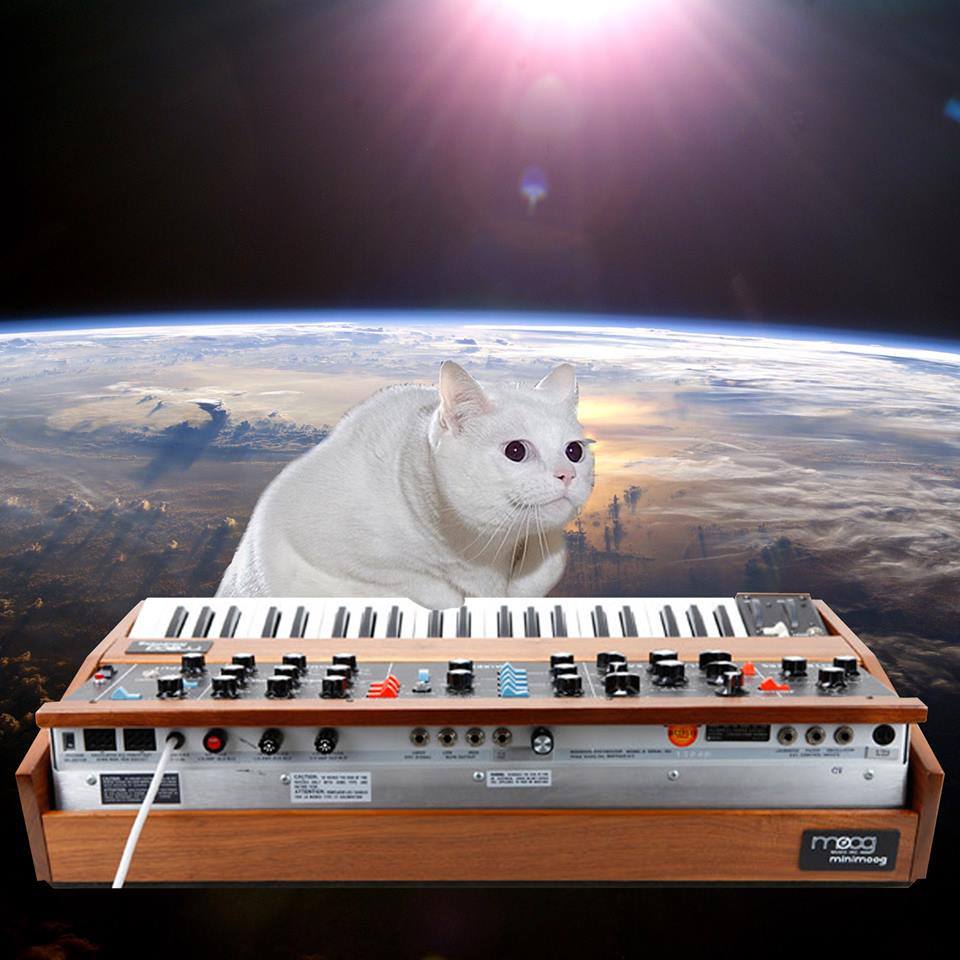/PAlogo_v2.gif)
/PAlogo_v2.gif) |
|
Post Reply 
|
Page 123 4> |
| Author | |||
Anoraknok 
Forum Newbie 

Joined: October 29 2013 Status: Offline Points: 35 |
 Topic: The importance of music theory Topic: The importance of music theoryPosted: October 04 2014 at 13:08 |
||
|
Well SW admits he is not really educated, still, everyone worships him like there is no tomorrow. So I guess it doesn't matter to do a successful - even progressive styled - music.
As for me, music theory is a very useful thing as long as you employ it when necessary and forget it when the art demands. |
|||
 |
|||
moshkito 
Forum Senior Member 
Joined: January 04 2007 Location: Grok City Status: Online Points: 16458 |
 Posted: October 04 2014 at 13:02 Posted: October 04 2014 at 13:02 |
||
But that's like saying that you can not "find" new things, just because you don't know the scales! And that is not true, at all.
Even theater, showed that better than otherwise, with the new styles and writers, with different things, many of which were direct results of very advanced rehearsals and such. I'm not sure that musicians take that kind of exercise as seriously, but I know that many of them "practice" their parts quite a bit into the night away from the limelight. And that could/should have just as much "input" and "influence" as a rehearsal can with a director. Albeit the musician is not really in a position to be in the outside and inside at the same time. And I think this is the biggest issue with musicians!
You can't be in two places at once and nowhere at all at the same time. With thanks to the Firesign Theater
|
|||
|
Music is not just for listening ... it is for LIVING ... you got to feel it to know what's it about! Not being told!
www.pedrosena.com |
|||
 |
|||
Dean 
Special Collaborator 

Retired Admin and Amateur Layabout Joined: May 13 2007 Location: Europe Status: Offline Points: 37575 |
 Posted: October 03 2014 at 05:10 Posted: October 03 2014 at 05:10 |
||
Another cool observation: the common thing about the pipe organ and woodwind and brass instruments is that the sound is produced in a tube. To this list we can add whistles, recorders, pan pipes, didgeridoos, the Japanese shō and wind chimes. Plus tu-bu-lar-bells... In each how the sound is generated is different, organs and woodwinds use a reed, brass uses the players lips and whistle use a fipple, but it is the tube turns them into a musical instrument. It does this because the sound resonates in the tube and the length and bore of the tube determines the fundamental resonant frequency, which we call the pitch of the note. In a wind-chime or tubular bell the sound is the resonance itself. A simple tube can be made to resonate at different frequencies, for example in a Natural Horn (i.e., one without valves or slides) the player can produce different notes by changing their lip-tension, but they cannot produce just any frequency, they can only produce a certain number of notes, and those notes are all related to each other harmonically. This is because the tube can only resonate at whole multiples of the fundamental tone (1, 2, 3, 4, 5, 6, 7 etc.) and this is therefore a harmonic series. As we have seen, a pentatonic scale is also part of that same harmonic series so a simple tube can play notes that are pentatonic. The earliest known musical instrument is a tube with five holes in it... In effect the tube is a filter that only allows the tones in that harmonic series to be heard, another way of thinking of this is that the tube amplifies the harmonic tones and suppresses the non-harmonic ones. The raw sound produced in the mouth-piece by the players lips is full of different frequencies, both harmonic and non-harmonic, the tube filters out the non-harmonic ones and amplifies the harmonic ones. By changing lip-tension the player changes the range of raw frequencies they generate and the tube does the rest. When a horn-player plays the fundamental (i.e. lowest) note their lips are also creating some higher tones, the tube filters off all those that are not harmonic and some of them that are harmonic, so the resulting sound you hear is the basic fundamental with lots of harmonics, this is called the timbre of the note. The timbre is determined by how well the tube can amplify each of the harmonics, this is called the formant. We can measure the timber of a note using spectral analysis (Fourier Transforms), this gives us the relative proportions (i.e., heights) of the peaks in the spectrum and by observing that these proportions remain more-or-less the same for every note produced and we call this "shape" of spectral peaks the formant. The formant of a tube can be changed by altering its shape (cross section) and its diameter - simple circular cross-sections for example are better at amplifying odd harmonics whereas other shapes suppress some of these harmonics and/or allow more of the even-harmonics to be heard. The tube in a saxophone has a flattened cross-section and that boosts the even-harmonics... which is why a soprano sax does not sound the same (i.e. does not have the same timbre) as a clarinet - its formant is different. Formant is key to how an instrument sounds, it is what produces the timbre of the note played. This affects all instruments and determine why all instruments playing the same note sound different. The shape of a violin body affects its formant, the material it is made from also affects its formant, this carries through into the body shape of a guitar and explains why a Les Paul has a different "tone" to a Telecaster. Edited by Dean - October 03 2014 at 05:14 |
|||
|
What?
|
|||
 |
|||
moshkito 
Forum Senior Member 
Joined: January 04 2007 Location: Grok City Status: Online Points: 16458 |
 Posted: September 30 2014 at 12:09 Posted: September 30 2014 at 12:09 |
||
Ths whole thing ... excellent. Sometimes I wish I knew music better, since I probably would have a lot of fun doing/talking/playing stuff like this. My mind is a bit like that at times.
|
|||
|
Music is not just for listening ... it is for LIVING ... you got to feel it to know what's it about! Not being told!
www.pedrosena.com |
|||
 |
|||
Dean 
Special Collaborator 

Retired Admin and Amateur Layabout Joined: May 13 2007 Location: Europe Status: Offline Points: 37575 |
 Posted: September 28 2014 at 04:36 Posted: September 28 2014 at 04:36 |
||
Another interesting thing about harmonics and the pentatonic: As can be seen in my "footnote" above, the Cmaj chord is constructed from three notes of the C major pentatonic scale, C E and G. The second and third notes are harmonically related to C. E is a 5th harmonic and G is a 3rd harmonic. The beat notes produced are also harmonic, being the 9th and the 7th harmonic of C respectively. What is immediately obvious here is that all these numbers are odd numbers, we have "C" the fundamental or 1st, then the 3rd, 5th, 7th and 9th harmonic. If we apply inverse-Fourier transform to these 5 tones (i.e., add them together) we get a single waveform whose fundamental frequency (i.e., the lowest tone you can hear) is "C", which is why the chord is a C chord and not an "E" or a "G". If we sum all the odd harmonics of a tone together in the right proportions the resulting waveform is a square wave, if we change the proportions we get a triangle wave. This is not a coincidence and it goes way beyond being just a cool observation. The summation of odd harmonics sound good: all woodwind instruments produce tones that are rich in odd harmonics, all brass instruments produce tones that are rich in odd harmonics; and the pipe in a pipe organ resonates at odd harmonic intervals. An overdriven guitar, though it is distortion, sounds pleasing in its purest form is also rich in odd harmonics and even the plucked string of a guitar that isn't overdriven has stronger odd harmonics than even ones. Each piano note is made from the sound of three strings all tuned to the same pitch, these three strings are different gauges so the tension in each is different for the same pitch, this change in tension creates the overall tone of the piano note, and is rich in odd harmonics. In electronic instruments we exploit this odd-harmonic relationship when creating new sounds: the fundamental tone generators (square and triangular) that the notes are synthesised from are all rich in odd harmonics and we apply filtering to subtract some of those harmonics to produce tones that sound good but are still rich in odd harmonics. One characteristic of all these sounds is that they are symmetrical, that is they vibrate back and forth equally in both directions. We hear these vibrations because our ear converts the back and forth motion in the air as it hits our ear-drum into a back and forth motion of the fluid in the cochlea, which is then detected by the movement of hairs in the cell walls and converted to electrical signals that are sent to the brain. Sounds that move these hairs smoothly (i.e., symmetrically) sound good, those that jerk them around (i.e., asymetrically) do not. Our physiology determines what sounds good, not psychology.
Edited by Dean - October 03 2014 at 03:11 |
|||
|
What?
|
|||
 |
|||
Toaster Mantis 
Forum Senior Member 

Joined: April 12 2008 Location: Denmark Status: Offline Points: 5898 |
 Posted: September 28 2014 at 01:55 Posted: September 28 2014 at 01:55 |
||
|
There's actually an article about this biological/psychological basis of aesthetics in the latest issue of a Danish-language journal of philosophy I picked up earlier this week. It's published at the college I attend, and I've contributed several articles to it in the past. (the master's thesis I'm writing right now is kind of about the same subject, just from a more idealistic/metaphysical angle)
I haven't finished reading that article, but I could perhaps post a summary of it in this thread when I'm done. Is anyone interested? Edited by Toaster Mantis - September 28 2014 at 02:49 |
|||
|
"The past is not some static being, it is not a previous present, nor a present that has passed away; the past has its own dynamic being which is constantly renewed and renewing." - Claire Colebrook
|
|||
 |
|||
Dean 
Special Collaborator 

Retired Admin and Amateur Layabout Joined: May 13 2007 Location: Europe Status: Offline Points: 37575 |
 Posted: September 27 2014 at 20:03 Posted: September 27 2014 at 20:03 |
||
It's not cultural. Nor is it limited to species.
Regardless of whether either or neither of them are right, the observation that some birds sing in harmonic intervals that are the same as those in human singing reinforces the mathematical analysis/explanation of harmony.
The "golden ratio" is a consequence of binocular vision and is related to the aspect ratio of our central field of vision, which is that part of the scene that both eyes can see simultaneously. A person who is blind in one eye tends to prefer proportions that are squarer. There is no psychobabble magic to this, it is simply mathematics and human physiology. Plot narratives follow a series of predictable "what do you think will happen next?" stages, given that the beginning and the end stages are fixed and a solution-stage can never come before the problem-stage, then there are a limited number of permutations of intermediate stages available.
|
|||
|
What?
|
|||
 |
|||
Toaster Mantis 
Forum Senior Member 

Joined: April 12 2008 Location: Denmark Status: Offline Points: 5898 |
 Posted: September 27 2014 at 17:56 Posted: September 27 2014 at 17:56 |
||
|
That's very interesting. Sorry I didn't get around to watching the videos until now, I've had an incredibly busy week.
I guess there's just something to the way the human brain is wired that means there's this certainty to what people across different cultures will find pleasing to the senses. Perhaps that might even be the reasons that it's possible to establish commonly accepted standards for art on any kind of shared scale, there's this . There's actually quite a bit of theory written on how similar patterns go again in the visual arts, like the "golden ratio" which goes again in several artistic traditions independent from each other, or the Joseph Campbell/Christopher Brooker model of how the vast majority of literary narratives follow the same basic structures in quite the specific. Of course, those seem to be based on bigger generalizations than the universality of pentatonic scales. |
|||
|
"The past is not some static being, it is not a previous present, nor a present that has passed away; the past has its own dynamic being which is constantly renewed and renewing." - Claire Colebrook
|
|||
 |
|||
rogerthat 
Prog Reviewer 
Joined: September 03 2006 Location: . Status: Offline Points: 9869 |
 Posted: September 21 2014 at 10:03 Posted: September 21 2014 at 10:03 |
||
|
That McFerrin video was amazing. And to confirm what he said, what all the audience vocalised is pretty much like the basic Carnatic scales we used to sing in high school music class...except, that is, for the part where he started harmonizing.
Edited by rogerthat - September 21 2014 at 10:04 |
|||
 |
|||
Dean 
Special Collaborator 

Retired Admin and Amateur Layabout Joined: May 13 2007 Location: Europe Status: Offline Points: 37575 |
 Posted: September 21 2014 at 09:46 Posted: September 21 2014 at 09:46 |
||
As I said, most music traditions are centred around a pentatonic scale even if those five notes come from a scale that has more than 12 notes or has an uneven temperament or are not tuned to Western concert pitch (A=440Hz). Along with Indian (raga), Japanese and Korean music is based upon pentatonics (both are related to Chinese pentatonic scales). I'll never tire of showing this video by Howard Goodall, so here it is again for those who haven't seen it: The pentatonic is something that when any two of the notes played together produces harmonics that are sympathetic to notes in the scale or mode, this is a universal constant that can be described mathematically¹. Scales were not chosen at random, each note was carefully selected to be harmonious with its neighbour based on the "beat note" principle. Y will only be harmonious with X if the resulting beat note is also harmonious. Before Music Theory analysed how this worked musicians figured all this out empirically - they played two notes then tuned the second so it sounded harmonious. It was only later when smart people analysed the scale they discovered the mathematical relationship between the notes². This relationship is a power of 2, and is related to the octave and the harmonic series. Because two notes can be played together and sound harmonious we get chords. Chords can also be described mathematically³ even though they were originally derived empirically. In the dark annuls of history ancient cultures did not start with a many-note (chromatic) scale and pick 5 sympathetic notes from that to form a pentatonic - they all started with one (root) note and selected notes that were harmonic with it, this resulted in pentatonic scales and they derived the many-note scales from them - the reason for this is that when you transpose a pentatonic you need new notes that are harmonic to the new root-note to produce the new scale - in the Western music you needed a total of 7 more "new" notes to complete a full-octave scale, which results in the 12-note chromatic scale. In other cultures the actual derivation of their "chromatic" scales (even those that are non-chromatic) were also produced from simple harmonic scales of 5 or more notes - where they differ is in tuning and temperament. I started with a video, so I'll end with one that hammers home the inherent and natural universality of the pentatonic: ~~~~~~~~~~~~~~~~~~~~~~~~~~~~~~~~~~~~~~~~~~~~~~~~~~~~~~~~~~~~~~~~~~~~~~~~~~~~~~~~~~~~~~~~~~ ¹These harmonic beat notes can be heard when tuning a guitar - for example when we play an in-tune "E" on one string together with an "E" on the string we want to tune we will hear a low frequency beat note, this (theory tells us) is a third note that is produced when one note is mathematically added to (or subtracted from) another. We learnt this in school as a trigonometric identity: sin(X) + sin (Y) = 2(sin((X+Y)÷2) × cos((X-Y)÷2)) When the two notes are identical the beat disappears ((X+Y)÷2=X and X-Y=0) but if the gap between them is sufficiently large then this third note could be a audible note that is on the same scale as the two notes that produced it. If this does occur then the third note is harmonious with the other two. ²These smart buggers analysed what sounds harmonious and discovered that the new "harmonious" note can be divided by a multiple of two (i.e., 2, 4, 8, etc) and multiplied by another whole number. So if we play a note that is 5/4ths of C then the beat note will be 9/8ths of C [(1+5/4)/2=(9/4)/2=9/8)] - since all three notes can be expressed as fractions of C we can say that 5/4ths is a 5th harmonic of C and 9/8ths is a 9th harmonic of C - in the convention of the Western scale these three notes are C E and D respectively. ³ Chords are any pairing of notes that are harmonic, when more than two notes form the chord the relationship between them all relates back to the root-note. In the above example of C and E we can add a G to produce a C-major chord. This G is a 3rd harmonic of C and results in a beat note that is a 7th harmonic of C.
Edited by Dean - October 03 2014 at 03:09 |
|||
|
What?
|
|||
 |
|||
Toaster Mantis 
Forum Senior Member 

Joined: April 12 2008 Location: Denmark Status: Offline Points: 5898 |
 Posted: September 21 2014 at 06:51 Posted: September 21 2014 at 06:51 |
||
|
It would be interesting here to look into the classical music traditions of cultures that aren't of Indo-European origin at all, Japan or Korea for instance, and compare their underlying systems of modes/scales/phrases.
|
|||
|
"The past is not some static being, it is not a previous present, nor a present that has passed away; the past has its own dynamic being which is constantly renewed and renewing." - Claire Colebrook
|
|||
 |
|||
rogerthat 
Prog Reviewer 
Joined: September 03 2006 Location: . Status: Offline Points: 9869 |
 Posted: September 20 2014 at 07:09 Posted: September 20 2014 at 07:09 |
||
Could you elaborate on that because this statement makes me quite curious. Because our ragas/modes are quite similar to Western scales with the difference being that the name of the raga does not change only based on the absolute notes being played; rather it depends on the relative locations of the notes. But the construction of a melodic phrase is not drastically different in Indian music vis a vis Western music. The main difference is our melodies are much more intricate (whereas we have no harmony or just one note harmony) but it's essentially the same phrase embellished a lot more to give it a curvy shape that Western melodies don't have (in comparison). And this is not just my observation. The Indian composer Ilayaraja made the same observation when asked how he was able to fuse Western and Indian. He said he heard Indian ragas in J S Bach's compositions, just minus the ornamentation and thus concluded they were essentially one and the same. I think it would be safe to say he knows a damn sight more about both forms of music than either of us. In the same vein, I have watched Shakti perform (RIP U Shrinivas) and observed first hand what I had already heard before in their recorded output - McLaughlin comfortably slipping in phrases that would fit note for note in Western music even as he performed within the boundaries of music that was largely Hindustani-based. I have often wondered if misconception and prejudice, rather than any logical impossibilities, make it so difficult to establish common ground between the two schools. It is of course quite possible you mean something entirely different by the word construction so I shall look forward to your response.
Edited by rogerthat - September 20 2014 at 07:10 |
|||
 |
|||
Davesax1965 
Forum Senior Member 
Joined: May 23 2013 Location: UK Status: Offline Points: 2826 |
 Posted: September 19 2014 at 09:41 Posted: September 19 2014 at 09:41 |
||
|
As an analogy, music theory is physics. You don't consider physics when catching a ball. You learn the principles and just do it. It is important to know the rules. As it is to, say, know the rules of a language.
On this Dean and I agree, it seems. However, it's the method of delivery we appear to be at odds on (and some other minor stuff. ;-) ) - if I get a sax out, after 40 years of playing and go on stage and blow, what happens is that I think music and music comes out of the end of the sax, without me being consciously aware of constructing it, what theory applies and even the fact that my fingers are moving. It just happens. The fact is, there is tons of theory somewhere in my head, but it's not at the front of my thoughts when playing, otherwise I couldn't play. I'd be too busy thinking. If you learn to play an instrument, theory is something you have to know. However, the purpose of playing an instrument.... is to play. A lot of classically trained players sit there with the sheet music (or tab, in the case of a lot of guitarists) and when you remove it, they're lost. Do not, whatever you do, think that theory is music. Theory is just theory. If you spend 10 years thinking "scales go up, scales go down", then you end up just being able to play scales which.... go up and down. I showed some hopeless case the notes of a minor pentatonic blues scale a few years back and he said "which notes do you bend ? " - Will, put the guitar back in the case, honestly, put the case under the bed, leave it there. |
|||
 |
|||
Guldbamsen 
Special Collaborator 

Retired Admin Joined: January 22 2009 Location: Magic Theatre Status: Offline Points: 23098 |
 Posted: September 19 2014 at 05:45 Posted: September 19 2014 at 05:45 |
||
|
Well all that music theory really does is to offer up a universal music language. Now whether that is preferable is something I leave entirely up to the different musicians out there. I do however think there are places, even in rock music, where it's recommendable to have your theory up to scratch.....playing with Zappa for instance.
|
|||
|
“The Guide says there is an art to flying or rather a knack. The knack lies in learning how to throw yourself at the ground and miss.”
- Douglas Adams |
|||
 |
|||
PrognosticMind 
Forum Senior Member 

Joined: August 02 2014 Location: New Hampshire Status: Offline Points: 1195 |
 Posted: September 19 2014 at 05:36 Posted: September 19 2014 at 05:36 |
||
This. This times all the this-es
 . . |
|||
|
"A squid eating dough in a polyethylene bag is fast and bulbous. Got me?"
|
|||
 |
|||
Toaster Mantis 
Forum Senior Member 

Joined: April 12 2008 Location: Denmark Status: Offline Points: 5898 |
 Posted: September 19 2014 at 05:18 Posted: September 19 2014 at 05:18 |
||
|
Yeah, I get the impression that as many of the last 60 years or so's breakthroughs within music theory have come from developments in jazz/improv rather than "classical" orchestral music. Even within the context of something like free jazz, you need to know the rules in order to successfully work around them if they shape audience expectations just through "cultural osmosis". This I'm saying as someone who doesn't get that much closer to real jazz than Captain Beefheart and Frank Zappa. Popular audiences might not know that much theory, but by trickling down through discourse of music through writing and musicians themselves it still informs ideas of what music is capable of in composition and performance.
One example is that even with the rudimentary music theory knowledge I mentioned in the opening post, I still have the ability to sense to the point a piece of music sounds awkward or off-kilter is by design or by accident: Basically if there's some kind of coherent system to how the music deviates from the standardized norm of its style. It's what differentiates Celtic Frost and Voivod's earliest records from so many other no-fi early-1980s metal records lacking traditional technical proficiency. (one reason I think the latter is so underrated on this site) |
|||
|
"The past is not some static being, it is not a previous present, nor a present that has passed away; the past has its own dynamic being which is constantly renewed and renewing." - Claire Colebrook
|
|||
 |
|||
Dean 
Special Collaborator 

Retired Admin and Amateur Layabout Joined: May 13 2007 Location: Europe Status: Offline Points: 37575 |
 Posted: September 19 2014 at 04:33 Posted: September 19 2014 at 04:33 |
||
|
Erm. I said Music Theory, not Western Music Theory, Music Theory encompasses all hemispheres; Music Theory = Western Music Theory + Middle Eastern Music Theory + Eastern Music Theory + etc.
Music Theory covers atonal and microtonal scales and all ports in between. Ignoring regional variations in pitch and temperament, the music composed does not use every note in the 12/17/24 note scales and the notes chosen are those that work well together. Theory did not dictate which notes to use, musicians found those notes "by ear" and the Theory later explained why that was so, we use the Theory as a convention so we don't have to use trial and error every time. This is a common convention in the music of any hemisphere, the basic raga in Indian music is a melody formed from five notes from the full Indian scale, those basic five notes are pentatonic in nature. 9/8 time can have the beat emphasis wherever you want it to be, the common western convention is to split it into a triple compound (3+3+3) but this is not a fixed rule, some Irish music places the emphasis on the 5th and 9th beat, and other Western music splits it into non-triple compounds (2+2+2+3 a la Blue Rondo, Apocalypse in 9/8 goes 3+2+4). All this is covered by Music Theory. I also made no distinction between informal music theory (playing by ear) and formal Music Theory. Playing by ear finds what works, Music Theory describes why it works. As you said earlier: "...you don't want to produce a cacophony, so it's knowing when and how to break the rules which is important." ... Improvisation does not throw theory (informal or formal) out of the window, quite the opposite, it generally adheres more rigidly to convention than formal composition... It's fun to play but can be arse-numbing to listen to. |
|||
|
What?
|
|||
 |
|||
Davesax1965 
Forum Senior Member 
Joined: May 23 2013 Location: UK Status: Offline Points: 2826 |
 Posted: September 19 2014 at 03:09 Posted: September 19 2014 at 03:09 |
||
Non musicians, in the main. Boss at work, lady on the bus who failed her school clarinet exams..... ;-)
|
|||
 |
|||
Davesax1965 
Forum Senior Member 
Joined: May 23 2013 Location: UK Status: Offline Points: 2826 |
 Posted: September 19 2014 at 03:07 Posted: September 19 2014 at 03:07 |
||
|
I disagree. All forms of music regardless of their place of origin has a music theory to describe it. Eastern music has real musical theory, you say it sounds alien to Western theory but it is not completely alien, it has the same basic tenets of scales, note length and note intervals, meters, rhythms and tempo that are common to all forms of human created music, they have different 'rule-sets' to describe the music produced but the basics are the same. [/QUOTE] Hi Dean, yes and no. Eastern maqams are not constructed in anything like a similar way to Western music or use scales in the same way that Western music does. 17 notes per octave in Eastern music, remember ? ;-) (24 in some cases.) Indian music uses - in the main - a completely different method of construction, too. As for meters, nope. The meters and rhythms of, say, Moroccan gnawa music or the music of Istanbul are completely alien to Western music. OK, you can have a 9/8 time signature in Western music but the beat emphasis is completely different. [/QUOTE] Yet self-taught musicians and musicians with no formal training pick up those scales "by ear" - they are note-intervals that sound right when played together (and there are good mathematical reasons for that that I'll not go into). Every form of music played throughout the world (and from the archaeological evidence, throughout human history) shares similar sequences of note-intervals that can be described as a scale (or mode). [/QUOTE] Absolutely, and this is what people forget. It is possible to play by ear alone. This is what I'm saying, *musicians get hung up by believing they have to learn musical theory and that they have to relate everything back to theory before they can play anything*. As a matter of fact, you don't. You can play by ear, and this is the important thing in music, because it's the basis of improvisation, which is - to me, anyway, true music. So what I'm saying is please forget all your music theory, folks. Learn it, but only learn it as far as you need it, ie. to gain a basic understanding and then play from ear from there. What I see is an infinite number of guitarists who just sit at home playing scales up and down up and down up and down until that's all they can do. They forget to *play the damn guitar* [/QUOTE]Music Theory describes World Music. [/QUOTE] Er, sorry, Dean. Music theory can be *used* to describe world music, but world music is so varied that whilst music theory can be bent to a description of it, it's occasionally a very bad translation. ;-) Edited by Davesax1965 - September 19 2014 at 03:08 |
|||
 |
|||
Dayvenkirq 
Forum Senior Member 

Joined: May 25 2011 Location: Los Angeles, CA Status: Offline Points: 10970 |
 Posted: September 18 2014 at 06:12 Posted: September 18 2014 at 06:12 |
||
|
|||
 |
|||
Post Reply 
|
Page 123 4> |
| Forum Jump | Forum Permissions  You cannot post new topics in this forum You cannot reply to topics in this forum You cannot delete your posts in this forum You cannot edit your posts in this forum You cannot create polls in this forum You cannot vote in polls in this forum |